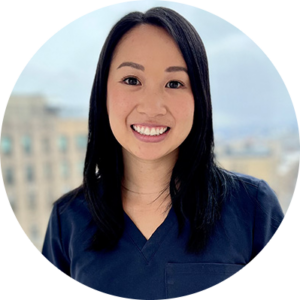Small Bowel Capsule Endoscopy
What is a small bowel capsule endoscopy?
Small bowel capsule endoscopy is a technology that uses a swallowed video capsule to take photographs and examine the three portions of the small intestine (duodenum, jejunum, ileum), or the middle part of your gastrointestinal tract. For capsule endoscopy, the intestines are first cleared of residual food and bacterial debris with the use of laxatives used before a colonoscopy. A large capsule is swallowed by the patient. The capsule contains a camera, a light source, a battery, and a radio transmitter. As the capsule travels through the esophagus, stomach, and small intestine, it takes two pictures a second for 8 hours. The photographs are transmitted by the radio transmitter to a small receiver that is worn on the waist of the patient who is undergoing the capsule endoscopy. The patient is free to move about during the 8-hour exam. At the end of the procedure, the photographs are downloaded from the receiver into a computer, and the images are later reviewed. The capsule is passed by the patient into the toilet and flushed away. It does not need to be retrieved.
What type of diseases can be diagnosed with capsule endoscopy?
Capsule endoscopy can help the doctor determine the cause for recurrent or persistent symptoms such as abdominal pain, diarrhea, bleeding or anemia. Some common examples of small intestine diseases diagnosed by capsule endoscopy include:
- Crohn’s disease of the small intestine
- Angiodysplasias (collections of small blood vessels located just beneath the inner intestinal lining that can bleed intermittently and cause anemia)
- Look for the source of unexplained iron deficiency or anemia
- Check for heme positive stool and that nothing is found in the digestive tract or colon
- Small intestinal tumors such as lymphoma and small intestinal cancer
How do I prepare for capsule endoscopy?
Day Before
In the morning, mix and refrigerate the Colyte. After breakfast, start a clear liquid diet (broth, bouillon, clear fruit juices or soda, coffee or tea – without milk or cream). Do not drink anything that is red or purple in color. Do not drink juice with pulp, dairy or soy products. Starting around 6-7 pm, drink 1 glass (8 ounces) of Colyte every 10 minutes until finished with half the container (2 liters). DO NOT eat, drink, chew gum or smoke after 10 pm. You may brush your teeth.
What to expect during a capsule endoscopy
Arrive at our office dressed in loose-fitting, two-piece clothing. Do not take your regular medications. Bring them with you and you will be able to take them 2 hours after swallowing the capsule. Upon arriving at our office, you will be checked-in and asked to give your informed consent. The Sensor Array (a series of wires and electrodes similar to those used when taking an EKG) will be applied to your abdomen with adhesive pads and connected to a walkman-like Data Recorder which is worn in a belt around your waist. You will then ingest the PillCam SB capsule. After 8 hours you will return to our office to have the Sensory Array and Data Recorder removed. Removing the equipment is a fairly quick process and should take only a few minutes. The Pillcam capsule is disposable and will be excreted naturally in your bowel movement. You do not need to retrieve it.
After ingesting the PillCam SB capsule
After ingesting the PillCam SB capsule, do not eat or drink for at least 2 hours. After 4 hours you may have a light lunch and continue drinking clear liquids throughout the procedure. After the examination is completed you may return to your normal diet. Contact our office immediately if you suffer from any abdominal pain, nausea or vomiting during SB capsule endoscopy.
After ingesting the PillCam SB capsule and until it is excreted, you should not be near any source of powerful electromagnetic fields such as one created near an MRI device or amateur (ham) radio.
Occasionally, some images may be lost due to radio interference (e.g. from an amateur radio transmitter, MRI, etc.). On rare occasions, this may result in the need to repeat the SB Capsule Endoscopy examination.
SB capsule endoscopy lasts approximately 8 hours. Do not disconnect the equipment or remove the belt at any time during this period. Since the Data Recorder is actually a small computer, it should be treated with the utmost care and protection. Avoid sudden movement and banging of the Data Recorder.
During SB capsule endoscopy, you will need to verify every 15 minutes that the small light on top of the Data Recorder is blinking twice per second. If, for some reason, it stops blinking at this rate, record the time and contact us. You should also record the time and nature of an event such as eating, drinking, your activity, and unusual sensations. Return the Event Form with these notes to us at the time you return the equipment.
Avoid any strenuous physical activity especially if it involves sweating and does not bend over or stoop during capsule endoscopy.
After completing SB capsule endoscopy
You will be instructed on how to return the equipment at the end of the test. If you were instructed to remove the equipment by yourself, do the following:
- Disconnect the Sensor Array from the Data Recorder;
- Take off the Recorder Belt (with the Data Recorder and Battery Pack);
- Disconnect the Battery Pack from the Data Recorder;
- Place Data Recorder and Battery Pack in a safe place.
To remove the Sensor Array from your abdomen, do not pull the leads of the Sensor Array! Peel off each adhesive sleeve starting with the non-adhesive tab without removing the sensor from the adhesive sleeve. Place the Sensor-Array with the rest of the equipment.
The Data Recorder stores the images of your examination. Handle the Data Recorder, Recorder-Belt, Sensor Array and Battery Pack carefully. Do not expose them to shock, vibration or direct sunlight, which may result in loss of information. Return all of the equipment to our office as soon as possible.
If you did not positively verify the excretion of the PillCam SB capsule from your body, and you develop unexplained post procedure nausea, abdominal pain or vomiting, us for further evaluation and possible abdominal X-ray examination.
Undergoing an MRI while the capsule is inside your body may result in serious damage to your intestinal tract or abdominal cavity. If you did not positively verify the excretion of the PillCam SB capsule from your body, you should contact your physician for evaluation and possible abdominal X-ray before undergoing an MRI examination.
What are the limitations and complications of capsule endoscopy?
While the capsule provides the best means of viewing the inside of the small intestine, there are some inherent limitations and problems with its use, the most important of which is that the capsule does not allow for therapy. Other problems
include:
- Abnormalities in some areas of the intestine are missed because of rapid transit of the capsule and blurred, uninterpretable photographs.
- At times, transit is slow and the capsule does not examine the entire small intestine before the battery dies.
- If abnormalities are discovered that require surgical resection or further investigation, it may be difficult to determine exactly where in the small intestine the abnormality is located.
- If there are narrow areas due to scarring (strictures) or tumors in the small intestine, the capsule can get stuck in the narrow area and cause an obstruction. This may require surgical removal of the capsule.



